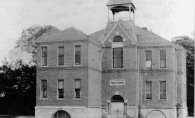More than 150 years ago, the Dakota War of 1862, also known as the Sioux Uprising, began along the Minnesota River. It spread into southwest Minnesota, touching a few of our lake-area suburbs and leaving deep scars in our history.
The conflict began when treaties between the Dakota and the United States government were violated, leaving the Dakota in hardship and hunger. “Let them eat grass!” the head of the agency supposedly told the Dakota tribe of Native Americans after they requested food in exchange for their credit, following the Treaty of Traverse des Sioux that forced them to give up 24 million acres of land. His refusal to open up the storehouses of grain to prevent starvation caused a group of outraged young Dakota to convince their elders to approve an attack on the agency on August 20, 1862. The corpse of the head agent, Myrick, was later found with his mouth stuffed with grass.
While the war didn’t reach Lake Minnetonka’s shores, lake-area residents heard of the conflict as the news spread quickly—observers exaggerated that “all the tribes clear to the mountains are moving.” Shortly after hearing this, a huge number of panicked settlers moved out of the area.
Some farmers and families built a stockade around the schoolhouse in Excelsior in hopes of making a stand against the Dakota. Rather than risking a potentially dangerous trip into Fort Snelling or St. Anthony, women and children were sent on steamboat Governor Ramsey to Gooseberry Island (later called Gale or Brightwood Island). But the boat engine died en route and it drifted into Tonka Bay while the helpless passengers fretted over their fate. A local minister, Rev. Galpin, had his steamboat ready at the docks in Excelsior to bring the residents to Big Island, if need be. Other settlers had veterans from the Civil War at home and stayed in their cabins with guns loaded.
William Dudley, a Wayzata hotel owner, made steel traps to catch any intruders. Dudley refused to run when the conflict broke out. Instead, in his fireplace he forged several long harpoons with which he could impale invaders, and fabricated a “goose gun” for protection that he used to jokingly brag could “shoot a mile, kill 14 geese at a time.” He armed his wife with a harpoon as well, and they waited for an attack.
Settlers gathered together and grabbed whatever arms they had. In Excelsior, a shot rang out when one of the men accidentally set off his rifle while trying to clean it. A collective scream of terror rose when other residents assumed the gunshot signified an invasion. Then the bell in Excelsior rang furiously after someone claimed to have seen a Dakota warrior hiding in the woods. It turned out to be an old woman in a straw hat gathering blackberries. While settlers hid, the conflict spread around the Minnesota River and left the Lake Minnetonka area mostly untouched.
When the dust finally settled after four months of fighting across the state, an estimated 300 to 800 men, women and children were killed. As penance for their supposed crimes, 39 Dakota who were being held in Minnesota prisons were sentenced to be hanged in Mankato. The day after Christmas in 1862 remains the largest mass execution is U.S. history, as 38 of those sentenced were executed.
The remaining 1,600 Dakota were held in an internment camp on Pike Island by Fort Snelling in terrible conditions for the winter. More than 300 died. The next year, the Dakota were forced to leave the state and move to South Dakota or Nebraska.
A dark part of Minnesota and the lake area’s history, the conflict is one we should never forget. Now, each fall since 2002, individuals are invited to participate in the Dakota Commemorative Walk, a week-long march intended to honor those persecuted.
&
Excelsior-Lake Minnetonka Historical Society
305 Water St., Excelsior
952.221.4766
Eric Dregni is the author of By the Waters of Minnetonka (University of Minnesota Press).









